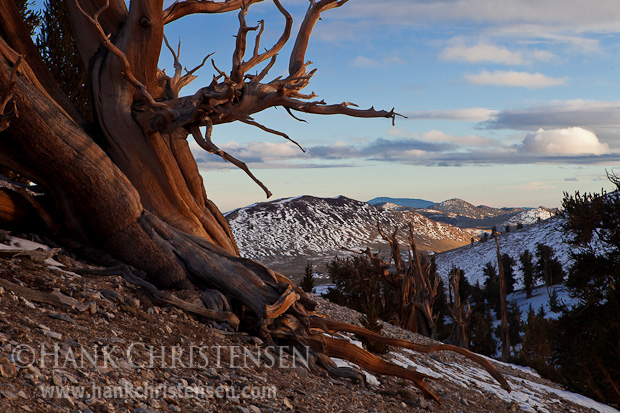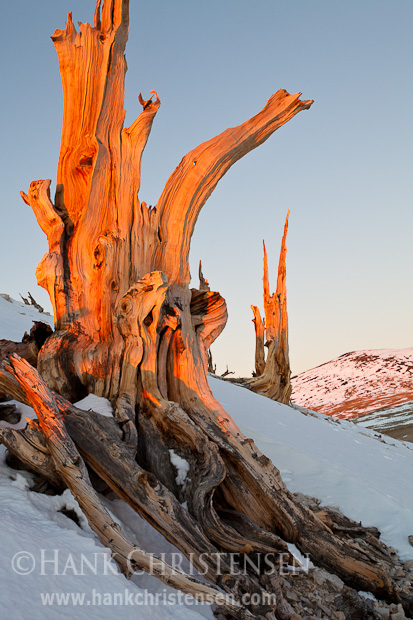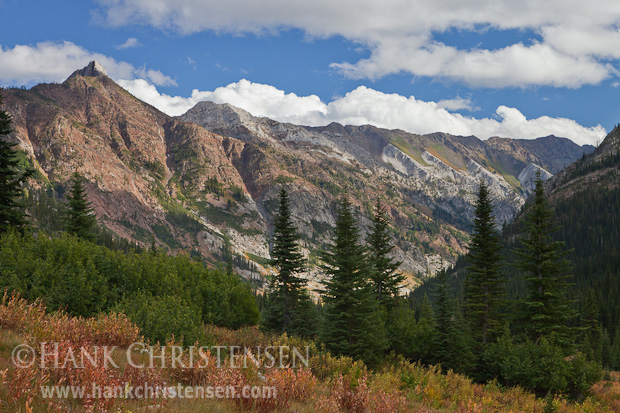
On my trip to the Owens Valley last month, I spent a night up in the Ancient Bristlecone Pine Forest with some friends. This forest runs across the ridge of the White Mountains in Inyo National Forest. It is an inhospitable environment, with a barren landscape, freezing weather, and frequent gale-force winds blasting across exposed rock. It is also one of my favorite places on earth.
This was the first time that I was in that area for both sunset and the following sunrise. A few small clouds moved in at sunset (above), providing some texture to the sky.
At sunrise, I had unobstructed views of the sun rising over the eastern horizon, across the Nevada desert. Similar to the intense alpenglow of the eastern Sierra peaks, at this elevation the trees turn an unworldly red glow at dawn. From a distance, these bare, twisted branches can transform into the wild licking flames of a campfire.

The early tree-glow gave way to direct sun on the bark. This was prime time to capture the morning light, and the race was on to photograph as much as possible before it faded. Of course, working along a steep slope at 11,500 in deep snow is not easy! Soon I was panting for breath and my heart was racing out of my chest. In these types of environments, it is better to pick a spot with several morning light opportunities and stay there.


An hour later, the sun had risen above the horizon, and the trees went back to their natural brown-tan color.

Photographing these trees in the right way is not an easy task. I learned this the hard way when I first visited the forest. Having seen many amazing photographs from Galen Rowell and David Meunch taken in this area, I was expecting a lot. But I came away with less than desirable photographs, and a deeper appreciation for the difficulty in photographing these trees well. The key is to take it slow and spend some time with the trees. Not to get too metaphysical, but it helps to sit with a tree, and listen. Each time I go back, I feel as though I understand the trees a little better, and my photos improve just a little more. Some day, I may just do them justice.

